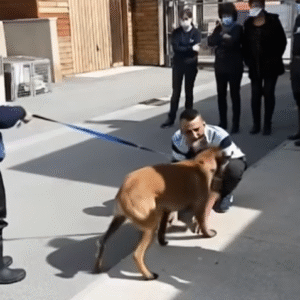Dog Collars: More Than Accessories
Dog collars are more than stylish accessories—they play a crucial role in communication and safety. A red collar on a dog often grabs attention and raises questions. Red, a bold color tied to signals and warnings, carries meaning in pet care. Understanding collar colors helps improve safety and communication between pet owners and the public.
The History and Symbolism of Dog Collars
A Tool with a Purpose
Dog collars have served many purposes throughout history, from identification to training tools. Over time, colors gained significance, drawing from societal cues like traffic signals. A red collar or tag, for example, often symbolizes caution or alertness.
Decoding Dog Collar Colors
Commonly Used Color Codes
Collar colors often convey specific messages:
- Green: Friendly dog
- Yellow: Nervous or anxious
- Blue: Service dog in training
- Red: Needs caution or space
While not universally standardized, these codes are recognized by many pet owners.
What Does a Red Collar Mean?
Significance of a Red Collar
A red collar often means the dog needs extra space. This could be due to:
- Aggression or reactivity
- Focus required during training
- Health concerns
In any case, a red collar signals to bystanders to avoid unnecessary interactions.
Misconceptions About Red Collars
Is the Dog Unwell?
A red collar doesn’t always mean the dog is sick. It could indicate behavioral challenges or simply a request for privacy. Owners use red collars for various reasons, but health issues aren’t the only factor.
Ambiguity in Interpretations
Red collars lack a universal meaning, leading to confusion. Some owners use red collars for personal preferences, while others use them as a cautionary signal. Clear communication is key when relying on color codes.
Emotional and Practical Considerations
Finding the Right Balance
Choosing a red collar often combines practical needs with emotional reassurance. For some owners, it acts as a warning, while others see it as a way to protect their dog’s space. However, it’s essential to consider how others perceive these signals.
Why Understanding Collar Colors Matters
Enhancing Safety and Respect
Awareness of color codes helps create safer environments during walks or at the park. Knowing what different colors mean ensures appropriate interactions, reducing misunderstandings.
Real-Life Benefits
Recognizing collar colors can prevent unwelcome approaches, especially for dogs needing space. This fosters better communication between pet owners and the public.
FAQs About Red Collars
- Does a red collar mean danger?
Not necessarily. It may indicate a need for space or training, not aggression. - Are collar colors standardized?
No, but certain conventions are widely recognized. - How should I react to a dog with a red collar?
Approach cautiously or not at all, and respect signals for space.
Key Takeaways
Red collars serve as valuable tools for signaling a dog’s needs or behavior. They promote safer and more respectful interactions between dogs, owners, and the public. Whether for caution, training, or health concerns, understanding these signals is vital for responsible pet ownership and community awareness.





